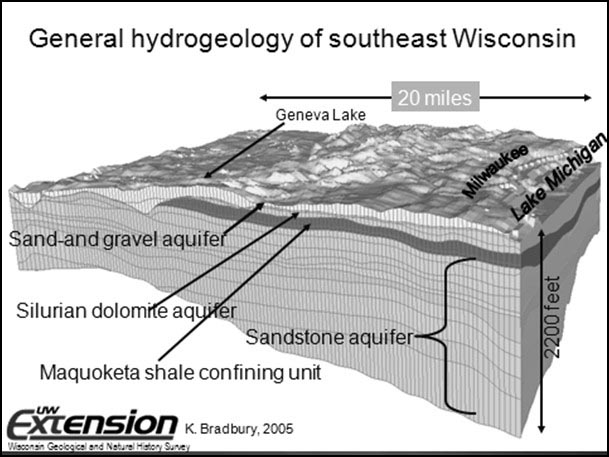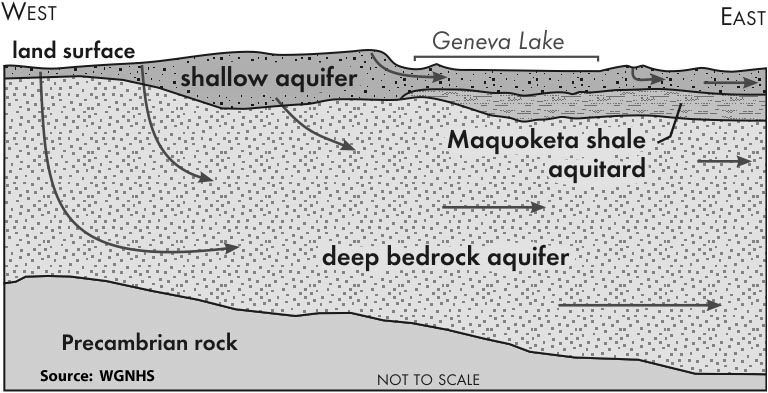Hydrogeology of the Geneva Lake Area, or What Is Underground Around Here?
Beneath our feet is the largest concentration of fresh water on the planet. Mixed within the soil and rock of the earth is the collection of the most important resource on the planet Earth - water, specifically groundwater.
Groundwater is simply water in the ground that fills the spaces or pores between rocks and soil particles. Water enters the ground from rains or through groundwater recharge by surface waters. When water enters the soil it moves downward to a zone of saturation or aquifer. The top of this saturation zone is called the water table. Once into the aquifer, groundwater constantly moves from upland recharge areas to lowland discharge areas. The speed of groundwater movement is dependent upon, size and number of spaces (porosity) in the soil or rock, connectivity of the open spaces and slope from recharge to discharge areas. Groundwater discharge happens by either pumping or by groundwater discharge to springs, streams or lakes.

Most Geneva Lake area drinking water, whether supplied by municipal or private wells, comes from the ground. Two major aquifers supply groundwater in the Geneva Lake area. The shallow aquifer, approximately 200 feet or less from the surface, is sand and gravel, left here by the glaciers. Beneath the sand and gravel is found the deep sandstone aquifer. Separating these two aquifers is a layer of impervious shale. The shale restricts interaction between the two aquifers for much of the Geneva Lake area.
The sand and gravel aquifer generally supplies good quantities of good quality water. It plays a major role in supplying water to Geneva Lake, its springs and streams. It also supplies water to many drinking wells that are less than 200 feet deep.

Water moves relatively fast in sand and gravel. Because of its proximity to the surface and its large pores, sand and gravel aquifers are very susceptible to contamination. Deeper wells in the Geneva Lake area (<200 ft) tap into the deep aquifer of limestone or sandstone. This aquifer is much tighter and holds less water than most of the sand and gravel. Water moves through the deep aquifer slower than in the sand and gravel. Water in the deep aquifer is not as susceptible to surface contamination. However, due to the chemistry of this aquifer, it can generate some of its own pollutants that can impact water quality.
This Groundwater Information, Education and Well Testing Program is brought to you and funded by the Linn Sanitary District and the Geneva Lake Environmental Agency
